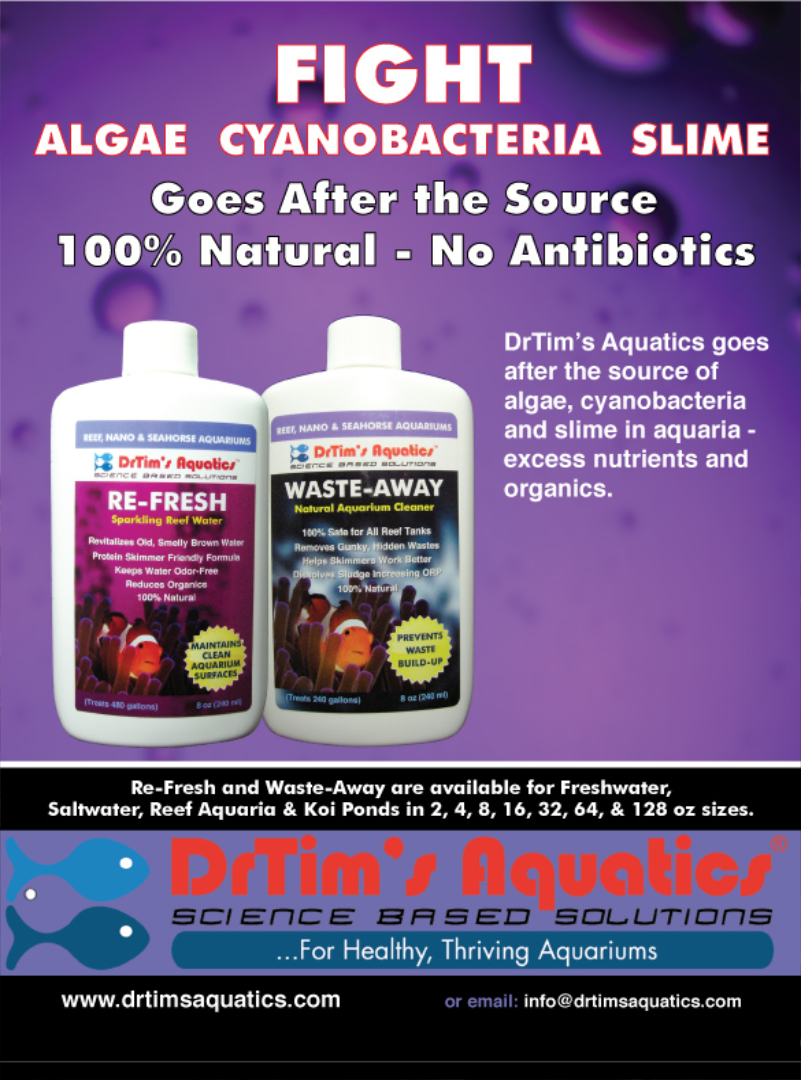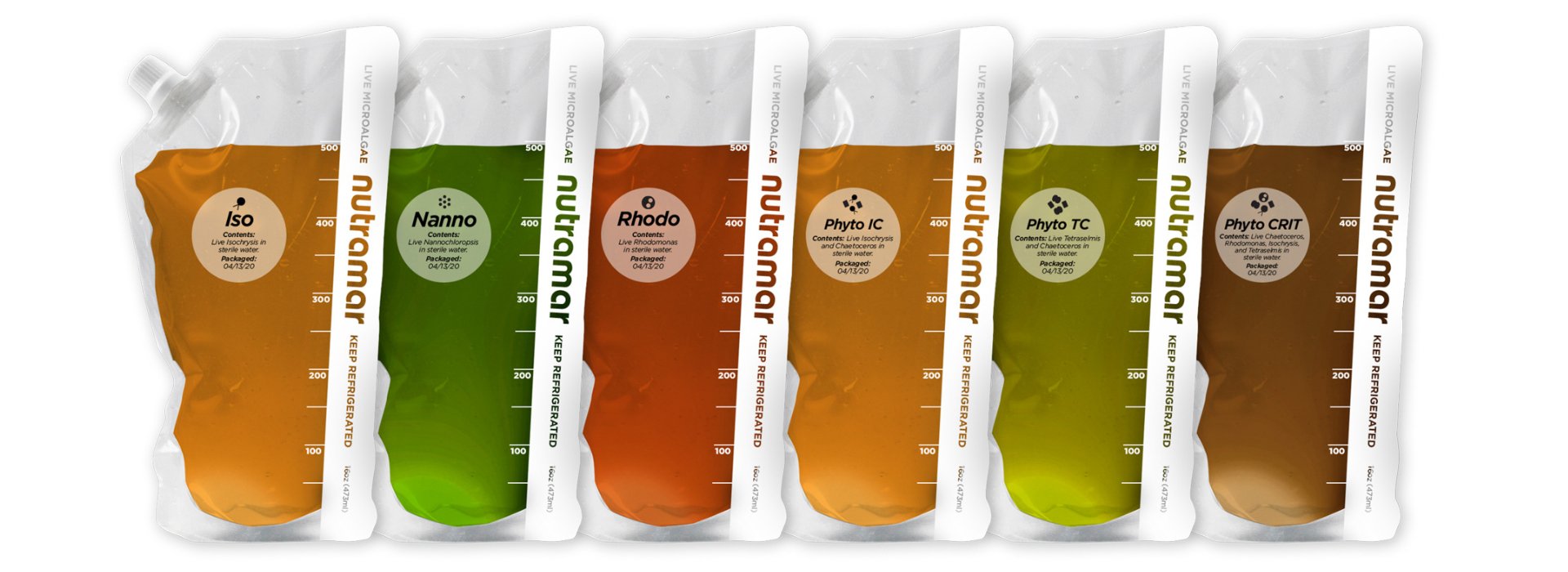Red Slime Is The Worst

Red Slime. Honestly, we hate to even have to write these words down. Sooner or later, most aquarists, especially those with new tanks are likely to have to battle this stuff. It seems to be most prevalent in aquariums that are less than a year old. It grows quickly, leaving a dense reddish-brown mat over everything it grows on, and if left in place, can kill what it covers. It's commonly also referred to as Cyano, Cyanobacteria, and Red Cyano in regard to its growth in marine aquariums. It's actually a blue-green algae, a more common problem for marine aquarists than freshwater, even though it thrives in both environments. In regard to the wide variety of issues one might have in a marine aquarium, Red Slime is one of the less invasive in that it isn't going to do much but be ugly, as long as you keep it off your corals and other inverts.
So, how do you deal with it? The best ways to deal with Red Slime is not to get it. Over the years we've amassed a few things that seem to pop up over and over when aquarists come to us for advice. Those repeating themes are headed off with stocking aquariums too soon or doing so without bacterial boosters like Dr. Tim's One and Only. Dr Tim's Re-Fresh and Waste-Away will also help fight Cyanobacteria. The biological filtration capacity that accumulates in seasoned aquariums steals nutrients and minerals that Red Slime loves. If you have a healthy community of bacteria and beneficial live algae in your tank, the Slime can't get a good foothold. This is yet another reason that we suggest all hobbyists use Nutramar's live algae products in all their tanks, not just as food for their filter feeding invertebrates (though it's amazing at that job as well). These algae blends help promote a healthy marine environment in your captive systems.

Next on our list of most common culprits is lack of flow. New aquarists with new tanks are the ones most likely to not have enough water movement in their aquariums. If there is one thing that Red Slime hates, its big flow. Your filtration system by itself is unlikely to have enough flow to prevent these growths. Try to have enough water movement in your aquarium to generate 20 times as much flow as you have volume. So if your aquarium is 40 gallons, your filtration systems and powerheads should make 80gph and ideally more.
Water sourcing is also important. If you are utilizing well water or treated tapwater to mix your saltwater, have that water tested, or get test results from your municipality. Water with excess nitrate, phosphate and silicates can all help fuel nuisance blooms of many types: hair algae, bubble algae, diatom blooms and slimes. The best way to get around this is to utilize water treated by reverse osmosis to remove all these impurities. Most LFS (Local Fish Stores) will have reverse osmosis water for sale at a very reasonable price. Many also offer pre-mixed saltwater as an option for you and this is also a good option. Just make sure they use a salt you like (we use and suggest Tropic Marin) at a salinity that matches your needs (see our article on water changes).
We understand you are likely tired of hearing about overfeeding, but since you're reading about how not to get Red Slime, we have to impress the importance of this on you once again. Use foods specific to marine aquariums, and be careful not to over feed. Use no more food than your fish will consume in a couple minutes and make sure not to feed so much that any food goes uneaten. Always use a quality food like those from Gamma (which have been irradiated to prevent adding nuisances to your tank) and Nutramar (that have been carefully formulated to have everything your fish need, and nothing that they don't.)
The last element of the big five is where you source your rock and sand. Many yard and beach rocks come with contaminants that you cannot see. They also sometimes bring in critters and other biological no-nos that can help seed your new aquarium with things you don't want. (Harvesting sand, rocks and critters from the beach is illegal in most places in north America without a permit anyway.) We have banged on this drum before, but sand from anywhere but an aquarium retailer has a high probability of being both dirty and silica based, helping fuel slime and diatoms as well. Spend a little money up front by buying your rocks (live, cultured, or dry) from your fish store! It will save you headaches and money in the long run.
But what about those of you who are reading this, with panic in your heart, because you already have the dreaded crimson blanket? Keep calm, and read on. Do not run to your store and buy one of the products to kill the slime in your tank. These are generally broad spectrum antibiotics. They will kill the slime, but as they are not specific to slime, they will also kill the rest of the beneficial bacteria your aquarium needs (and which we will need to help prevent re-infection).
Instead, start with manual removal of as much of the slime as you can. Obviously, the earlier you catch the infection the better. You will want to siphon out as much of it as possible while doing a water change (which is just as important at this juncture). You should feel free to do a larger water change than you usually would, 25% or even more, especially if you need to remove more water to get out more slime. As these slime will grow down into the sand, you're going to be sucking up some sand as well. Remove the siphon bell from your water change hose, this will increase the suction available, so it is strong enough to remove the infected sand and slime itself. You do not want to mix the slime back into the lower levels of your sandbed. Refill the tank with premixed saltwater the same way you would for any water change.
Next, address the big five topics above. Increase your turbulent flow, switch out low quality foods for better options, reduce your total amount of feeding, add beneficial bacteria (see Dr. Tim's note) and add some live algae blends (see Nutramar note). Cyanobacteria are photosyntetic (they need light to live) so reduce the number of hours your lighting is on per day to 6 hours or less. This is especially important for those of you with high par lighting used for growing hard corals and clams. If you don't have any other photosynthetic critters in your tank, consider leaving your lights off for a week or two while you repeat the processes of water changes and manual removal. Do water changes more often than you were. While we always suggest weekly water changes of 10%-20%, while you are trying to battle the Red Slime, bump this up to 25% twice weekly if possible.
If you follow these instructions, you should be clear of it in short order. For those of you with very young tanks you may see it come back, so keep a close watch on all the surfaces of your tank. Remove any of it you find immediately and make further adjustments to food amounts. Make sure you have enough clean up crew members. While most aquatic critters won't take care of the bloom once it has a handhold, Trochus and Cerith snails will consume early stages of slime development and knock other small amounts off the rock to be removed by your filter. Make sure you always have a few in your mix of snails.
Remember that patience is your friend, and panic is not. Red Slime, like almost everything else that could go wrong in a tank is temporary and treatable. An ounce of prevention is worth many pounds of cure. Keep an eye out, keep your flow up, keep your water clean and feed good food. Happy Reefing.